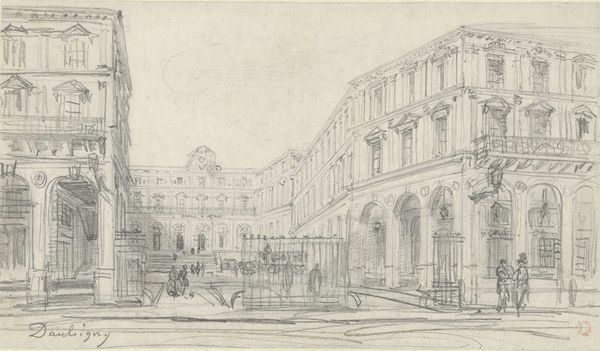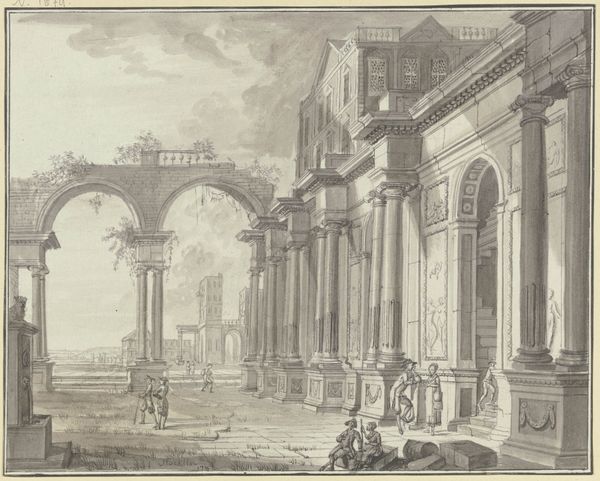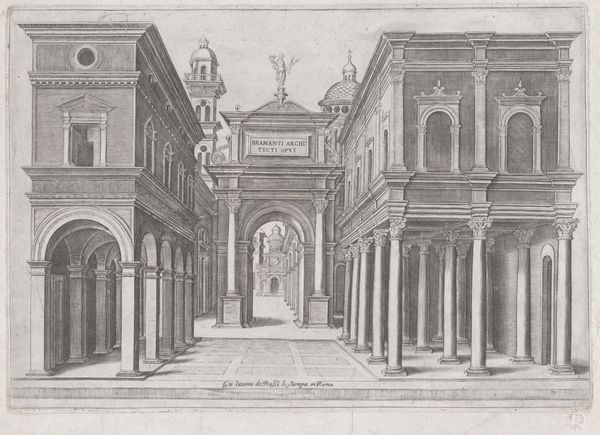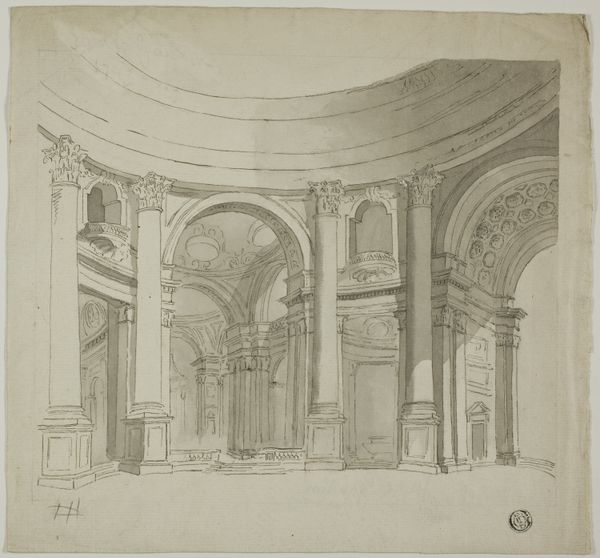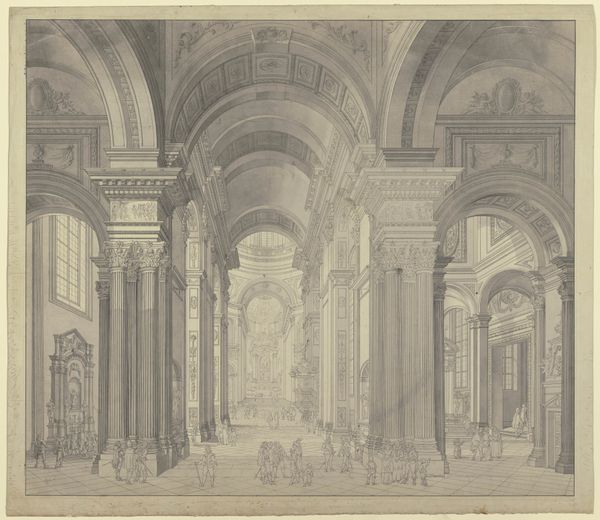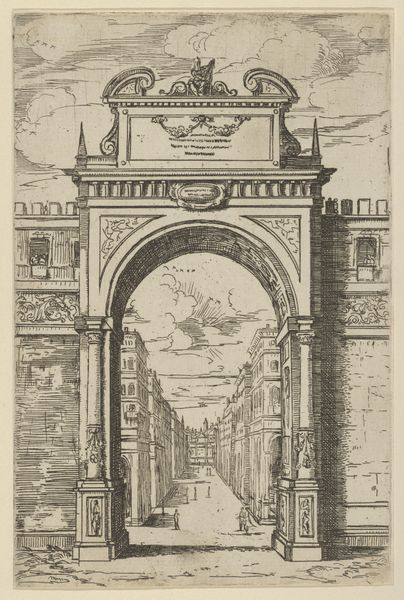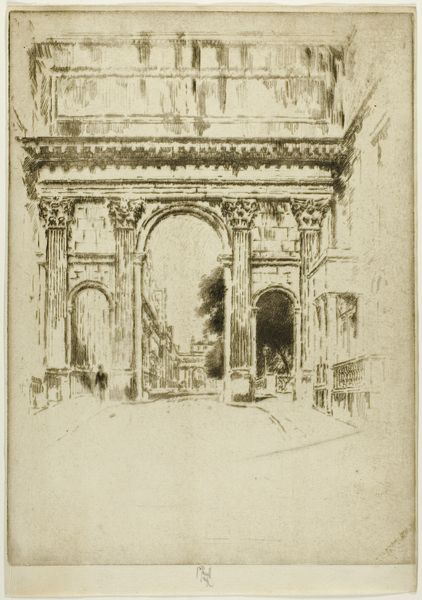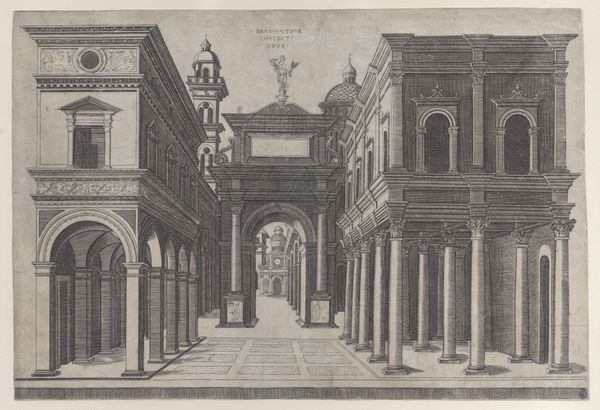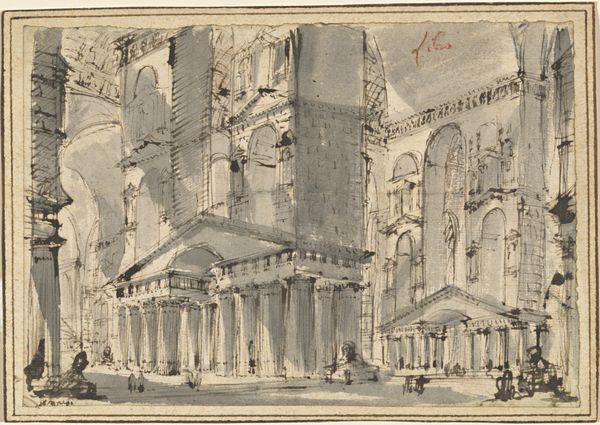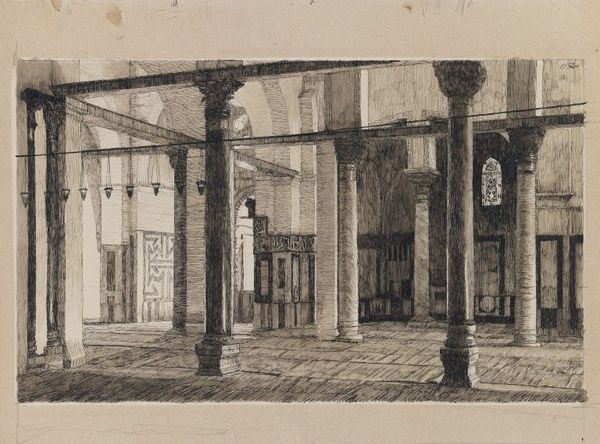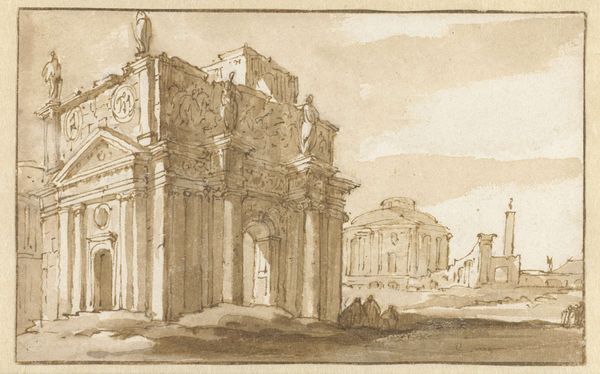
drawing, ink, architecture
#
drawing
#
neoclacissism
#
ink
#
geometric
#
architecture drawing
#
cityscape
#
architecture
Copyright: Public Domain
Curator: Let’s consider this pen and ink drawing, "Classic architecture," created by Georg Melchior Kraus. It now resides here at the Städel Museum. What's your immediate reaction to it? Editor: There's something quite ghostly about this. The monochrome palette creates a sense of stillness, almost as if we're viewing a city frozen in time, a landscape of memory sketched with an almost nervous intensity of line. Curator: Absolutely. The architecture itself is rendered with remarkable precision, showcasing the clean lines and symmetry emblematic of the Neoclassical movement, born from the Enlightenment focus on reason and order that spread through eighteenth century Europe. These buildings, designed as the home for society, for civic action, aimed to create moral citizens through their experience in geometrically aligned cityscapes. Editor: Yes, you can almost feel the Enlightenment dream being imposed onto the land. I find myself looking closely at the materiality of the ink, imagining Kraus meticulously applying the pigment to the paper, one stroke at a time. Curator: And Kraus, in this role as a state actor for the arts, played a role in perpetuating Neoclassicism as a mode for power during the Enlightenment. This architectural aesthetic reflected a wider social project aimed at standardizing taste and cultivating virtue but its rigid aesthetic standards may not have had room for the radical voices growing throughout Europe. Editor: It's compelling to see how Kraus’s focus captures both the grandeur and potential alienation of these meticulously planned urban environments. By reducing such complexity to simple ink drawings we may not get a complete image, but at least some trace of the physical labor that brought this geometric image to life on the page remains in the archive. Curator: I agree. This drawing invites us to consider the power dynamics inherent in urban design and who can fully inhabit this perfect symmetry when such rigor is built into society. Editor: It has encouraged me to reconsider how these cityscapes were actually produced, questioning what tangible elements made these projects physically come into existence. Curator: And for me, it provokes thought on the lasting social impact of the geometric order imposed on urban environments centuries ago.
Comments
No comments
Be the first to comment and join the conversation on the ultimate creative platform.
